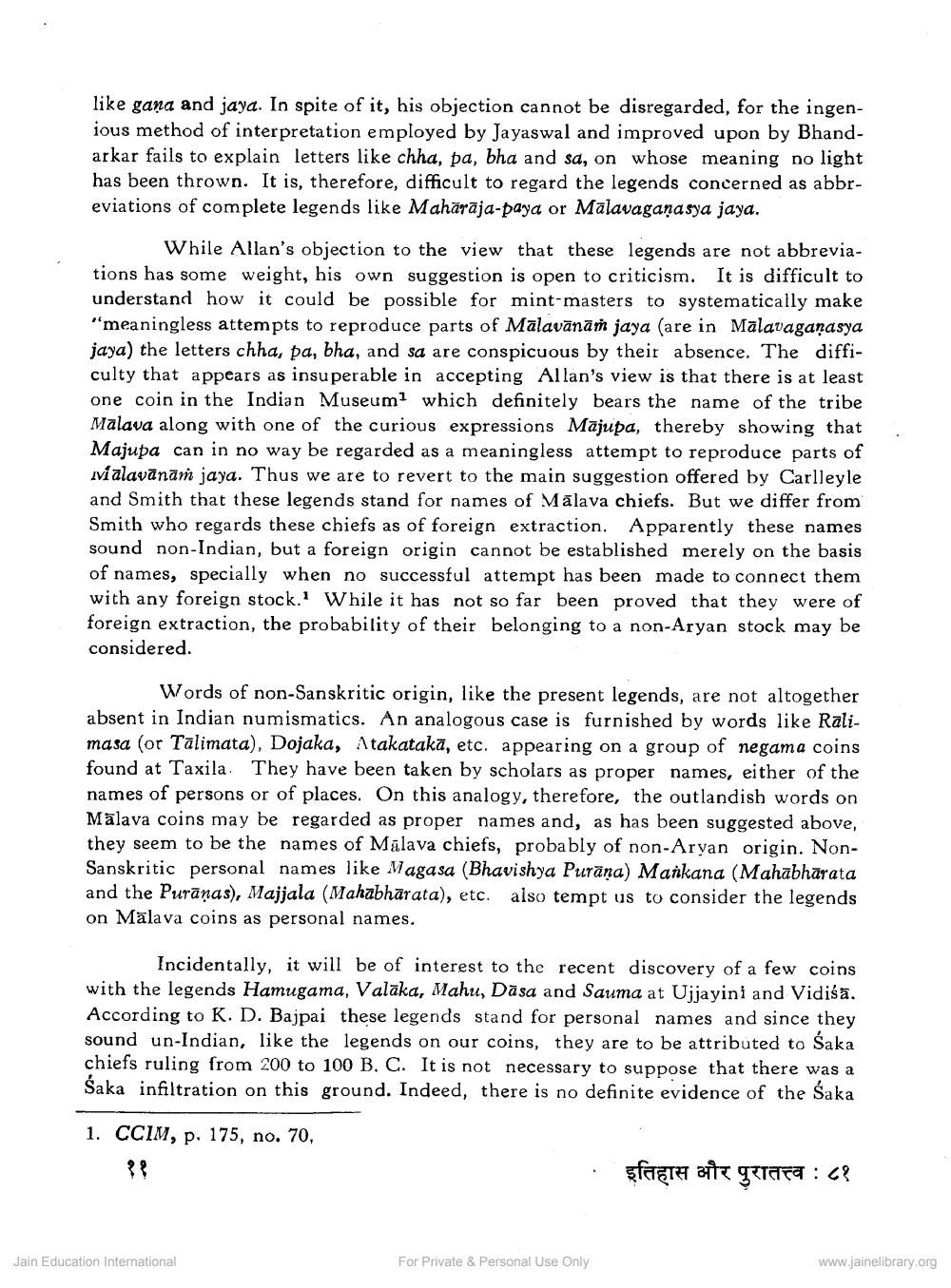________________
like gana and jaya. In spite of it, his objection cannot be disregarded, for the ingenious method of interpretation employed by Jayaswal and improved upon by Bhandarkar fails to explain letters like chha, pa, bha and sa, on whose meaning no light has been thrown. It is, therefore, difficult to regard the legends concerned as abbr eviations of complete legends like Maharaja-paya or Malavagaṇasya jaya.
While Allan's objection to the view that these legends are not abbreviations has some weight, his own suggestion is open to criticism. It is difficult to understand how it could be possible for mint-masters to systematically make "meaningless attempts to reproduce parts of Malavanām jaya (are in Malatagaṇasya jaya) the letters chha, pa, bha, and sa are conspicuous by their absence. The difficulty that appears as insuperable in accepting Allan's view is that there is at least one coin in the Indian Museum1 which definitely bears the name of the tribe Malava along with one of the curious expressions Majupa, thereby showing that Majupa can in no way be regarded as a meaningless attempt to reproduce parts of Malavanam jaya. Thus we are to revert to the main suggestion offered by Carlleyle and Smith that these legends stand for names of Malava chiefs. But we differ from Smith who regards these chiefs as of foreign extraction. Apparently these names sound non-Indian, but a foreign origin cannot be established merely on the basis of names, specially when no successful attempt has been made to connect them with any foreign stock. While it has not so far been proved that they were of foreign extraction, the probability of their belonging to a non-Aryan stock may be
considered.
Words of non-Sanskritic origin, like the present legends, are not altogether absent in Indian numismatics. An analogous case is furnished by words like Ralimasa (or Talimata), Dojaka, Atakataka, etc. appearing on a group of negama coins found at Taxila. They have been taken by scholars as proper names, either of the names of persons or of places. On this analogy, therefore, the outlandish words on Malava coins may be regarded as proper names and, as has been suggested above, they seem to be the names of Malava chiefs, probably of non-Aryan origin. NonSanskritic personal names like Magasa (Bhavishya Purana) Mankana (Mahabharata and the Puranas), Majjala (Mahabharata), etc. also tempt us to consider the legends on Malava coins as personal names.
Incidentally, it will be of interest to the recent discovery of a few coins with the legends Hamugama, Valaka, Mahu, Dasa and Sauma at Ujjayin! and Vidis. According to K. D. Bajpai these legends stand for personal names and since they sound un-Indian, like the legends on our coins, they are to be attributed to Saka chiefs ruling from 200 to 100 B. C. It is not necessary to suppose that there was a Saka infiltration on this ground. Indeed, there is no definite evidence of the Saka
1. CCIM, p. 175, no. 70.
??
Jain Education International
For Private & Personal Use Only
इतिहास और पुरातत्त्व : ८१
www.jainelibrary.org




